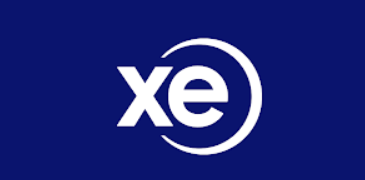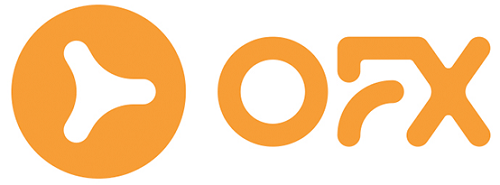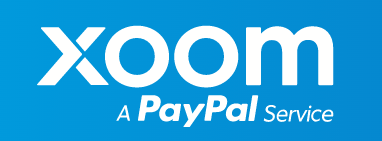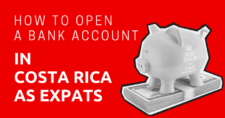
There’s no way to avoid the fact that you’re going to have to pay transfer fees when sending money to New Zealand. However, you can limit those fees by choosing the best transfer method for your situation.
How do you know which method is the best? That all depends on the services transfer fees and exchange rates — which sometimes aren’t stated up front.
But no worries, we’ve done all the leg work for you, so that you can decide which method is best for the amount you want to send.
In the guide to transferring money to New Zealand, we’ll discuss what to watch out for, provide a list of popular online money transfer services, and break down the costs of each.
This article will take approximately 15 minutes to read. Don't have the time right now? No worries. You can email the ad-free version of the article to yourself and read it later!
Disclaimer: This article may include links to products or services offered by ExpatDen’s partners, which give us commissions when you click on them. Although this may influence how they appear in the text, we only recommend solutions that we would use in your situation. Read more in our Advertising Disclosure.
Contents
What to Watch Out For
Sending money to New Zealand might seem like a simple enough process, but if you want to find the best way to transfer money, you have to take a look at several different factors.
Not all money transfer service options will be the same. Some cost more, some have unfair exchange rates, some are less secure, and others may take more time to arrive in the recipient’s bank account.
So, here are the different things you should watch out for when sending money to New Zealand.
Transfer Fees
If you’ve ever sent money overseas, you should be familiar with this is a type of fee. Transfer fees are probably the most obvious fees to look out for when sending money to New Zealand.
Most banks charge transfer fees from as little as US$0 to as much as US$15 or more.
Transfer fees are normally stated upfront when you send money. Most banks show how much you can expect to pay in fees when sending money to New Zealand before you complete your transaction.
Exchange Rates
Although the currency New Zealand uses is called the dollar, the New Zealand Dollar has a different value than the U.S. Dollar, Canadian Dollar, or even the Australian Dollar.

And the reality is that when you send money to New Zealand, you will pay for some kind of exchange rate markup.
Most banks, foreign exchange offices, and online money transfer systems often hide the exact markups for their exchange rates.
XE has a currency converter that you can use to check whether you are getting mid-market rates on your money transfer to New Zealand.
It helps to check before you transfer your money with a service, so that you can ensure you’re not losing too much money.
Security
With online money transfer service options popping up left and right, it might leave you to wonder if it’s safe to send money to New Zealand through these services.
Although, for the most part, these services are safe, you should always make sure that the bank or service provider you choose complies with any banking regulations in both your own country and in New Zealand.
If you choose an online money transfer service, it may also help to check whether the service is reputable or not. Check reviews online and ask your friends and family if they have had any experience with the service before going with it.
Transfer Speeds
Transfer timelines can vary widely. Some services can transfer money instantaneously, while others may take up to five business days for a money transfer to arrive in the recipient’s bank account.
The majority of money transfers to New Zealand take from one to five business days. This gives the money transfer service time to process the transfer request and send the money.
It is worth mentioning that although traditional money transfer services like international bank transfers may take one to five business days, some online services can transfer the money within a day.
Money Transfer Service Options
There are many different methods you can use when sending money to New Zealand, and each gives you different rates and transfer speeds.
If you don’t want to compare them individually yourself, you can use a website like Monito to do it for you.
Otherwise, let’s go through each of these options to find the best way to transfer money into the country.
Wise
Wise is one of the most famous and popular money transfer services available to expats today.

Unlike most banks or other online money transfer service providers, Wise does not markup its exchange rates. In fact, Wise uses Reuters to determine the current mid-market exchange rate.
You can even double check that the service uses the current market exchange rate before you use it. This way, you can check that you’re getting the best deal.
As an example, if you send US$1,000 to New Zealand, you only pay the following fees:
- US$1.60 bank debit fee
- US$5.09 Wise fee
So if you send US$1,000 to New Zealand, you’re charged US$6.69.
Wise’s transparency in fees is definitely one that is hard to beat by its competitors.
And according to Wise, the recipient bank account in New Zealand should receive the funds within eight hours. Generally, all funds sent to New Zealand arrive within one working day.
OFX
OFX is another online money transfer service that has offices all over the world, including in the U.S., Ireland, Australia, Hong Kong, and New Zealand.

OFX boasts that it does not have any transfer fees, and this is how they remain competitive compared to traditional banks and other online money transfer services.
However, OFX charges a slight markup as a hidden fee. This markup is quite competitive compared to other money transfer services, however.
Although OFX does not outright say how much of a markup it charges, it seems to be somewhere between 1 percent and 3 percent.
This means, for a US$1,000 transfer to New Zealand, you’re charged somewhere between US$10 and US$30.
Using this service is easy to use, all you have to do is sign up, verify your identity, and you’re good to go. As an additional plus, OFX has 24/7 customer support, so you know you’ll be supported at any time of day.
For bank transfers to New Zealand, OFX has a timeframe of one working day if transferring through their global network of banks. For other major currencies, this timeframe extends to one to two working days.
Xoom
Xoom is a service used by many expats all over the world and is PayPal’s answer to services like Wise. You can use Xoom through an app, a phone, or a computer.

Xoom fees can be a bit complicated, but to break it down, the fee depends on the funding source, the currency, the destination, and the transfer amount.
For example, if you’re sending US$1,000 to New Zealand, expect to pay US$9.99 when funding through a debit or credit card.
Alternatively, if you fund the amount with your bank account or PayPal balance, there is no fee.
On top of the Xoom fees, there is a hidden exchange rate markup. However, this markup is quite competitive and low compared to traditional banks. Like OFX, Xoom does not officially state the markup, but it seems to lie between 1 percent and 3 percent.
Therefore, to send US$1,000 to New Zealand, you’re charged a total of US$10 to US$30 and an additional US$9.99 if you fund the amount using a debit or credit card.
The funds should arrive in your New Zealand bank account within two business days.
Bank Transfers
One of the most common ways to send money internationally is to use a bank. For example purposes, I’ll use an American bank and a British bank to show the range of international bank transfer fees one can expect to pay when using this method.

Bank of America does not charge international transfer fees as long as the currency is sent in the destination’s currency.
However, they do charge hidden exchange rates that can really cut down on how much money you’re actually sending to the recipient’s New Zealand bank account.
The markup is not clear with Bank of America, but as with most banks, it seems they charge somewhere between 1 percent and 6 percent of the actual exchange rate.
So, for a US$1,000 transfer to New Zealand, you’re charged a hidden fee of US$10 to US$60. According to Bank of America, the money should arrive within two business days.

Barclays is a popular U.K. bank that offers international wire transfers to New Zealand. As long as the money is sent through online banking, there is no banking fee. But if you send the transfer from a bank branch, you are charged GBP25.
You are also charged a markup on the market exchange rate. Similarly to Bank of America, expect a exchange rate markup of between 1 percent and 6 percent.
Keep in mind that although these two examples don’t have international transfer fees (if you do it through online banking), many banks do charge these fees on top of the currency exchange markup.
So, contact your bank to find out what kind of fees you can expect them to charge.
Western Union
Western Union is a tried and true method of sending money overseas and is still popular even after a century in business.

The fees they charge depend on how the money is received (cash pickup or bank account), and it also depends on how you pay.
Paying for cash pickup in New Zealand has higher fees and a more unfavorable exchange rate. So if you plan to send money to New Zealand using Western Union, make sure to send it to your New Zealand bank account.
In doing so, the fee to send money will be either US$0.99 if you pay via bank account, US$2.99 if you pay via debit card, or US$29.99 if you pay via credit card. On top of that, you will need to keep an eye on the exchange rate as well.
To send money to a bank account in New Zealand, the markup seems to lie around 1 percent and 6 percent.
So, for example, if you send US$1,000 to New Zealand via debit card, you’re charged a fee of somewhere between US$12.99 to US$62.99.
The transfer time frame is usually around five business days but can be up to nine business days if you pay through a bank account.
Using Credit Cards
Instead of transferring money from your home country to New Zealand, some expats use a credit card to make payments in the country. However, most credit cards have a foreign transaction fee.
For example, for most U.S. credit cards, the transaction fee is somewhere around 3 percent on average. This doesn’t include exchange rate markups. So, on top of the foreign transaction fee, you should expect to add another 1 percent to 3 percent markup to the transaction.
This is a total of 4 percent to 6 percent extra that you have to pay. In other words, if you were to purchase something for the equivalent of US$1,000 in New Zealand, you would pay an extra US$40 to US$60.
These fees also apply to any ATM withdrawals. But keep in mind that with ATM withdrawals, you also have to pay an ATM fee at the machine – even if your credit card doesn’t charge ATM fees.
Although at first glance the 4 percent to 6 percent extra might seem like an unreasonable amount of fees compared to other options, this depends on your credit card.
In the end, not all credit cards charge a foreign transaction fee. In which case, you would just pay the exchange rate markup.
Exchanging Cash
A final method of transferring money to New Zealand is to simply carry cash with you from your home country to New Zealand.
Keep in mind that although there are no restrictions to how much cash you can bring into the country, you need to complete a Border Cash Report if you arrive at the airport carrying more than the equivalent of NZD$10,000.
You can exchange your money at the airport or at any money exchange service in most cities. Two of the most widespread currency exchange service companies in New Zealand are Travelex and No1 Currency.
However, there is a reason cash is not usually a recommended method of transferring money to another country. At currency exchange services like Travelex and No1 Currency, you can expect to pay a hefty markup.
The actual markup depends on the day and which company you use, but you can normally expect exchange rate markups of up to 10 percent.
This means, to exchange US$1,000, you could lose up to US$100, which is not ideal.
The Best Way to Send Money to New Zealand
To get a better idea of what exactly is the best way to send money to New Zealand, here is a table to compare sending US$1,000 to New Zealand through the methods listed in this guide. Keep in mind that this can change and may not always be accurate.
At the time of writing, the exchange rate for US Dollar to NZ Dollar is: US1 to NZD1.467.
| Transfer method | Transfer fees (USD) | Exchange rate (NZD) | Total fees paid (USD) | Amount received (NZD) |
| Wise | 6.69 | 1.467 | 6.69 | 1457.32 |
| OFX | 0 | 1.434 | 22.63 | 1433.80 |
| Xoom | 0 (with bank transfer) | 1.431 | 24.47 | 1431.10 |
| Bank transfers (Bank of America) | 0 | 1.386 | 55.09 | 1386.19 |
| Western Union | 2.99 (with debit card) | 1.447 | 16.58 | 1442.67 |
| Credit card | 3 percent (on average) | 1.459 | 33.50 | 1417.86 |
| Cash | 0 | 1.377 | 67.72 | 1376.65 |
Taking this table into account, it’s easy to see that Wise is the best way to send money to New Zealand while bringing cash to exchange is most notably the worst.
Now, on to You
The last thing you want to worry about is losing more money than necessary on transfer fees and exchange rates when sending money to New Zealand.
It’s inevitable that you will always pay some kind of fee when sending money, but the fee does not necessarily have to be unreasonable.
As you can see, money transfer services such as Wise are a great option to send money without paying hidden fees in the form of exchange rate markups.
So make sure to do proper research beforehand to ensure you are getting the most New Zealand Dollar for your buck.







